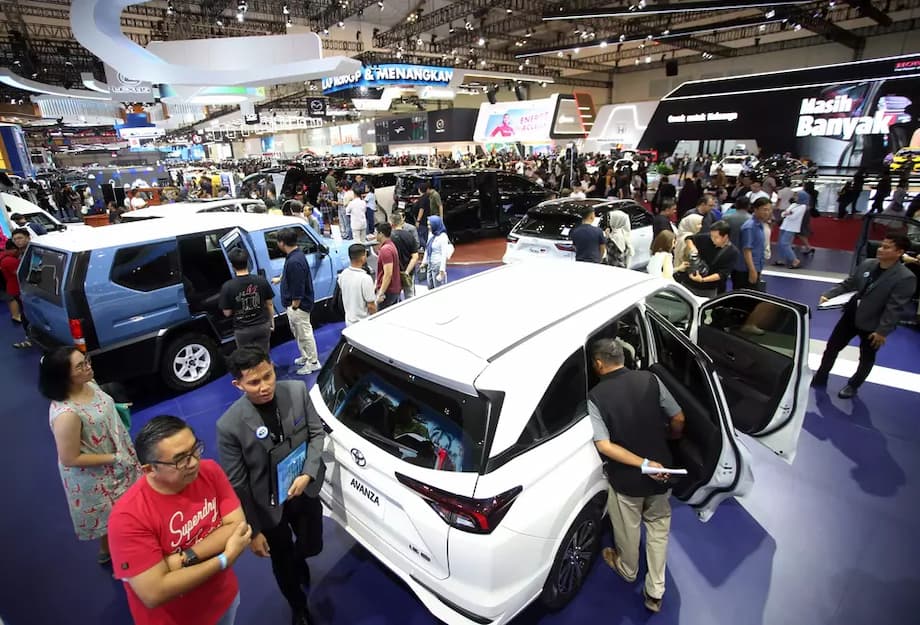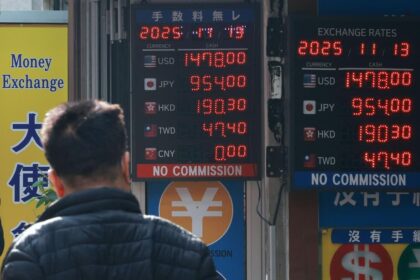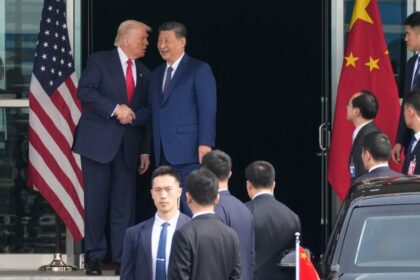Indonesia and Malaysia in Fierce Race for Southeast Asia’s Auto Market Crown
For decades, Indonesia has reigned as Southeast Asia’s largest automotive market, its sprawling population and robust manufacturing sector making it a magnet for global carmakers. But a dramatic shift is underway: Malaysia, long the region’s runner-up, is rapidly closing the sales gap and, by some measures, has already overtaken Indonesia as ASEAN’s top car market. This development is sending shockwaves through the industry and prompting urgent calls from Indonesian automakers for stronger government support.
- Indonesia and Malaysia in Fierce Race for Southeast Asia’s Auto Market Crown
- How Did Malaysia Catch Up to Indonesia?
- Chinese Brands and Electric Vehicles: The Game Changers
- Japanese and Global Brands: Losing Ground?
- Economic and Policy Factors: The Role of Government Support
- What’s Next? The Outlook for 2025 and Beyond
- In Summary
What’s behind this changing of the guard? The answer lies in a complex interplay of economic headwinds, shifting consumer preferences, aggressive competition from Chinese brands, and the accelerating transition to electric vehicles (EVs). This article unpacks the data, analyzes the trends, and explores what’s at stake for both countries—and the wider region.
How Did Malaysia Catch Up to Indonesia?
In 2024, Malaysia’s new vehicle sales hit a record 816,747 units, just shy of Indonesia’s 865,723, according to data from the Indonesian Automotive Industry Association (Gaikindo) and corroborated by industry analysts. This was no fluke. Malaysia’s automotive market has been on a steady upward trajectory, driven by:
- Strong performance of local brands: National carmakers Perodua and Proton have captured the hearts (and wallets) of Malaysian consumers with affordable, fuel-efficient models tailored to local tastes. Perodua alone sold over 358,000 units in 2024, its best-ever result.
- Government incentives: Temporary tax cuts and duty exemptions, especially for EVs, have fueled demand and created a backlog of orders that spilled into 2024.
- Resilient consumer demand: Malaysians have one of the highest vehicle ownership rates per capita in ASEAN, and a cultural affinity for cars continues to drive purchases even as the market normalizes post-pandemic.
Meanwhile, Indonesia’s auto sales have been slipping. In the first seven months of 2025, sales dropped 10% year-on-year to 435,390 units, with July alone seeing an 18% plunge compared to the previous year. The reasons are multifaceted:
- Weakened purchasing power: Indonesia’s middle class has shrunk since 2018, and higher interest rates have made car loans less accessible.
- Economic uncertainty: Political transitions, including the presidential election, have dampened consumer confidence.
- Tightened credit approvals: Banks have become more cautious, restricting auto financing amid concerns about nonperforming loans.
As a result, the once-comfortable lead Indonesia held over Malaysia is now razor-thin—and could soon disappear entirely.
Industry Voices Sound the Alarm
Gaikindo Secretary General Kukuh Kumara has been vocal about the risks. He warns that the downward trend in Indonesian sales should serve as a wake-up call for both the government and the industry:
“The gap with Malaysia is narrowing and without strategic action, it is not impossible that Indonesia could be overtaken.”
Gaikindo is urging the government to reintroduce incentives similar to those offered during the pandemic, such as tax cuts and credit support, to help the industry weather the storm and remain competitive.
Chinese Brands and Electric Vehicles: The Game Changers
One of the most significant forces reshaping the Southeast Asian auto market is the rapid rise of Chinese automakers, particularly in the electric vehicle segment. Brands like BYD, Chery, Wuling, and Neta have made aggressive inroads, offering feature-rich, competitively priced EVs that are winning over consumers and eroding the dominance of Japanese and South Korean incumbents.
In Indonesia, Chinese brands’ market share has nearly doubled in just a few years, rising from 3.4% in 2021 to 6.4% in 2024. BYD, for example, claimed a 36% share of Indonesia’s EV market within seven months of launching, while Wuling and Chery have also made significant gains. The government’s push to develop a domestic EV industry—leveraging Indonesia’s vast nickel resources for battery production—has further fueled this trend, with incentives and tax breaks attracting both foreign investment and consumer interest.
Malaysia, too, is seeing a surge in Chinese EVs. Chery surpassed Mazda to become the country’s fifth-largest brand by market share in 2024, and the number of Chinese brands entering the market is expected to reach 13 or 14 by the end of 2025. Local manufacturers are responding: Proton’s first EV, the e.MAS 7, launched in December 2024 and quickly garnered thousands of bookings, with more models on the way.
Why Are Chinese Brands Succeeding?
- Affordability: Chinese EVs are often priced below their Japanese and European rivals, making them accessible to a broader swath of consumers.
- Innovation: Advanced features, smart software, and cutting-edge battery technology are hallmarks of Chinese models.
- Government support: Both Indonesia and Malaysia have offered incentives for EV adoption, including tax exemptions and import duty waivers.
- Local production: Chinese automakers are investing in factories and supply chains in Southeast Asia, further reducing costs and building local credibility.
This influx of competition has forced Japanese brands—long the region’s undisputed leaders—to rethink their strategies. Toyota, Honda, and Mitsubishi are investing in hybrid technology, software development, and local partnerships to defend their turf, but the pace of change is relentless.
Japanese and Global Brands: Losing Ground?
Japanese automakers still dominate in terms of overall sales, but their grip is slipping. In Indonesia, their market share has dropped from 95% to 89% in just a few years. In Malaysia, Toyota and Mazda both saw double-digit declines in 2024, and their combined market share fell to 14%.
This is part of a broader regional trend. According to Bloomberg and DW, Japanese and German brands alike are losing ground to Chinese competitors across Southeast Asia, from Singapore to Thailand and Vietnam. The reasons are clear: Chinese brands offer better value for money, and their quality is now comparable to established players.
German luxury brands like BMW and Mercedes-Benz have also seen their market share shrink, though they remain strong in the high-end segment. The mass market, however, is where the real battle is being fought—and where Chinese brands are winning.
Thailand and Vietnam: Lessons from the Region
Thailand, once known as the “Detroit of the East,” is grappling with its own challenges. The country’s auto industry, heavily tied to Japanese manufacturers, has been slow to pivot to EVs. As a result, Chinese brands now account for about 40% of new car sales in Asia and Oceania, and 70% of EV sales in Southeast Asia. The Thai government is scrambling to attract local production by Chinese firms and maintain its status as a regional manufacturing hub.
Vietnam, meanwhile, is bucking the regional slump. Its car market grew by 24% in the first quarter of 2025, led by a surge in hybrid and EV sales. Domestic brand VinFast has become a rising star, selling over 87,000 fully electric vehicles in 2024 and benefiting from strong government support for green mobility.
Economic and Policy Factors: The Role of Government Support
Government policy is a decisive factor in the current market dynamics. In Malaysia, temporary tax cuts and duty exemptions for EVs have spurred demand, but these incentives are set to expire in late 2025. Industry analysts expect a normalization of demand and a potential decline in total industry volume as a result. Still, local brands like Perodua are expected to maintain their dominance, thanks to their affordability and strong brand loyalty.
Indonesia, on the other hand, faces a more challenging environment. Calls for renewed government incentives have so far gone unanswered. The central bank has cut interest rates to stimulate consumer spending, but high rates and tighter credit conditions persist. The government’s focus on building a domestic EV industry is promising, but the transition is still in its early stages, and infrastructure gaps remain.
Both countries are navigating a delicate balance: supporting local industry, attracting foreign investment, and managing the disruptive impact of new technologies and global competition. The outcome will shape not only their own automotive sectors but also the future of Southeast Asia’s car market as a whole.
What’s Next? The Outlook for 2025 and Beyond
The immediate future looks challenging for both Indonesia and Malaysia. Forecasts suggest that Malaysia’s total industry volume will decline by 9% in 2025 as demand normalizes and competition intensifies. Indonesia is expected to see a 14% drop in light vehicle sales, with economic headwinds and tighter credit continuing to weigh on the market.
Yet, there are reasons for optimism. The ASEAN automotive market as a whole is projected to rebound with 6% growth in 2024, led by the Philippines and Vietnam. Electrification is gaining momentum, with battery electric vehicle (BEV) sales surging across the region. Government targets are ambitious: Indonesia aims to produce 600,000 EVs by 2030, while Thailand is targeting 30% zero-emission vehicle production by the same year.
Chinese, Japanese, and South Korean automakers are all investing heavily in local production, partnerships, and new business models like subscription services and EV ridesharing. Price competition is expected to intensify, and consumers will benefit from a wider array of choices and more affordable options.
In Summary
- Malaysia has nearly caught up with—and in some measures surpassed—Indonesia as Southeast Asia’s largest auto market, driven by strong local brands and government incentives.
- Indonesia’s auto sales are declining due to weakened purchasing power, tighter credit, and economic uncertainty, prompting calls for renewed government support.
- Chinese automakers, especially in the EV segment, are rapidly gaining market share in both countries, challenging the dominance of Japanese and global brands.
- Government policy, local production, and consumer preferences are key factors shaping the competitive landscape.
- The future of Southeast Asia’s auto market will be defined by electrification, innovation, and the ability of local and foreign players to adapt to fast-changing trends.
- Both Indonesia and Malaysia face challenges in 2025, but the region’s long-term outlook remains positive as new technologies and business models drive growth.












